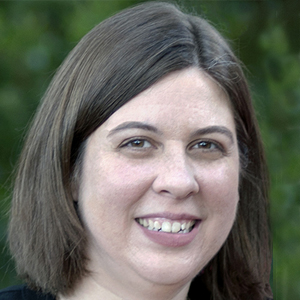Scientists identify cancer biomarkers in breast milk
A simple blood test for women of all ages and risk levels could one day be possible thanks to a new set of protein biomarkers that researchers identified using breast milk.
“Although mammograms are a useful tool for catching breast cancer early, they aren’t typically recommended for low-risk women under 40,” said Danielle Whitham, a doctoral candidate at Clarkson University in New York. “Because the biomarkers we found in breast milk are also detectable in blood serum, screening could potentially be done in women of any age using blood or breast milk.”

The newly identified biomarkers are for a specific type of cancer called invasive ductal carcinoma (IDC), one of the most common types of breast cancers. However, the researchers say that their approach could be used to identify biomarkers for other types of breast cancer.
“If our future studies are successful, it could change how women are monitored for breast cancer and aid in earlier diagnosis,” said Whitham. “This could even lead to a higher survival rate in women.”
Whitham will present the research at the American Society for Biochemistry and Molecular Biology annual meeting during the Experimental Biology (EB) 2022 meeting, to be held April 2–5 in Philadelphia.
“We used breast milk because it contains proteins, epithelial cells and immune cells, all of which provide a great deal of information about what is happening in a woman’s body during a crucial time in breast development,” said Whitham.
For the study, breast milk samples were obtained from three women diagnosed with breast cancer and three women without cancer. Using liquid chromatography with tandem mass spectrometry, the researchers compared the relative levels of certain proteins between the two groups to identify differences in the women with cancer. The analysis revealed 23 proteins that were dysregulated. All the proteins that showed differences were previously shown to play a role in cancer or tumor development.
Now that the researchers have identified a biomarker set, they plan to confirm it with a larger group of women. Then, they will test the protein biomarkers’ applicability in blood serum. If those tests are successful, a blood test could be developed to be used on women of any age to monitor protein changes for detection of breast cancer.
Research collaborators on this team include Costel Darie and Sumona Mondal of Clarkson University, Kathleen Arcaro and Brian Pentecost of the University of Massachusetts, Amherst and David Fenyo of New York University School of Medicine.
Women interested in helping with this research by donating breast milk samples can visit http://breastmilkresearch.org.
Danielle Whitham will present this research from 12:30–1:45 p.m. Monday, April 4, in Exhibit/Poster Hall A-B, Pennsylvania Convention Center (Poster Board Number A248) (abstract).
Enjoy reading ASBMB Today?
Become a member to receive the print edition four times a year and the digital edition monthly.
Learn moreGet the latest from ASBMB Today
Enter your email address, and we’ll send you a weekly email with recent articles, interviews and more.
Latest in Science
Science highlights or most popular articles

CRISPR epigenome editor offers potential gene therapies
Scientists from the University of California, Berkeley, created a system to modify the methylation patterns in neurons. They presented their findings at ASBMB 2025.

Finding a symphony among complex molecules
MOSAIC scholar Stanna Dorn uses total synthesis to recreate rare bacterial natural products with potential therapeutic applications.

E-cigarettes drive irreversible lung damage via free radicals
E-cigarettes are often thought to be safer because they lack many of the carcinogens found in tobacco cigarettes. However, scientists recently found that exposure to e-cigarette vapor can cause severe, irreversible lung damage.

Using DNA barcodes to capture local biodiversity
Undergraduate at the University of California, Santa Barbara, leads citizen science initiative to engage the public in DNA barcoding to catalog local biodiversity, fostering community involvement in science.

Targeting Toxoplasma parasites and their protein accomplices
Researchers identify that a Toxoplasma gondii enzyme drives parasite's survival. Read more about this recent study from the Journal of Lipid Research.

Scavenger protein receptor aids the transport of lipoproteins
Scientists elucidated how two major splice variants of scavenger receptors affect cellular localization in endothelial cells. Read more about this recent study from the Journal of Lipid Research.

